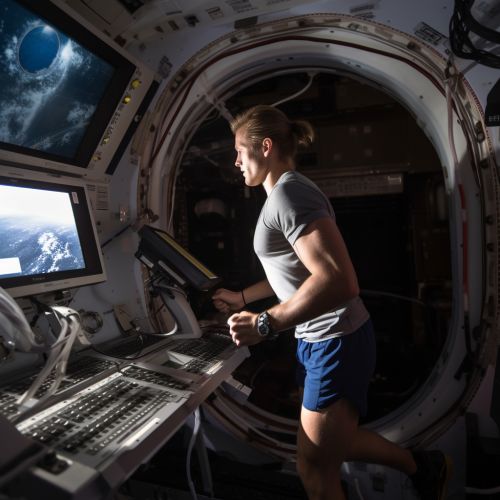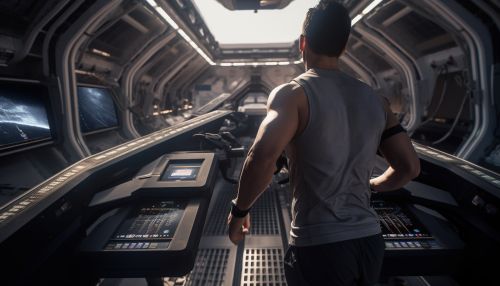Exercise Countermeasures in Human Space Travel
Introduction
Human space travel has been a topic of interest and research since the mid-20th century. One of the major challenges faced by astronauts during long-duration space missions is the adverse effects of microgravity on the human body. This article will delve into the various exercise countermeasures that have been developed and implemented to mitigate these effects.
Effects of Microgravity on the Human Body
In a microgravity environment, such as that experienced during space travel, the human body undergoes several physiological changes. These include muscle atrophy, bone mineral density loss, cardiovascular deconditioning, and changes in the neurovestibular system.
Muscle Atrophy
Muscle atrophy, or the wasting away of muscle tissue, is a significant concern for astronauts. In the absence of gravity, the muscles used for movements such as standing or walking do not need to work as hard. This reduced muscle activity leads to a decrease in muscle mass and strength.
Bone Mineral Density Loss
Another significant concern is the loss of bone mineral density (BMD). In a microgravity environment, the skeletal system is subjected to less mechanical stress than on Earth. This lack of stress leads to a decrease in BMD, increasing the risk of fractures both during and after space missions.
Cardiovascular Deconditioning
Cardiovascular deconditioning is another effect of long-duration space travel. The heart and blood vessels adapt to the lack of gravity by changing their structure and function, which can lead to a decrease in cardiovascular fitness.
Neurovestibular Changes
Changes in the neurovestibular system, which is responsible for maintaining balance and spatial orientation, can also occur in a microgravity environment. These changes can lead to symptoms such as dizziness and spatial disorientation.


Exercise Countermeasures
To counteract the adverse effects of microgravity, astronauts perform various forms of exercise during their space missions. These exercises are designed to simulate the mechanical stresses experienced by the body on Earth, thereby maintaining muscle mass, bone density, cardiovascular fitness, and neurovestibular function.
Resistance Exercise
Resistance exercise is a crucial component of the exercise countermeasures used in space. It involves the use of resistance, such as elastic bands or specially designed exercise devices, to work the muscles. This type of exercise is particularly effective in maintaining muscle mass and strength.
Aerobic Exercise
Aerobic exercise, such as running or cycling, is another important component of the exercise countermeasures. It is performed on specially designed treadmills or cycle ergometers and helps maintain cardiovascular fitness.
Balance and Coordination Exercises
Exercises aimed at maintaining balance and spatial orientation are also included in the exercise regimen. These exercises help counteract the changes in the neurovestibular system caused by microgravity.
Future Research and Developments
While the current exercise countermeasures have been effective in mitigating the effects of microgravity, there is ongoing research to further improve these methods. This includes the development of more efficient exercise devices and the exploration of other potential countermeasures, such as pharmacological interventions.
